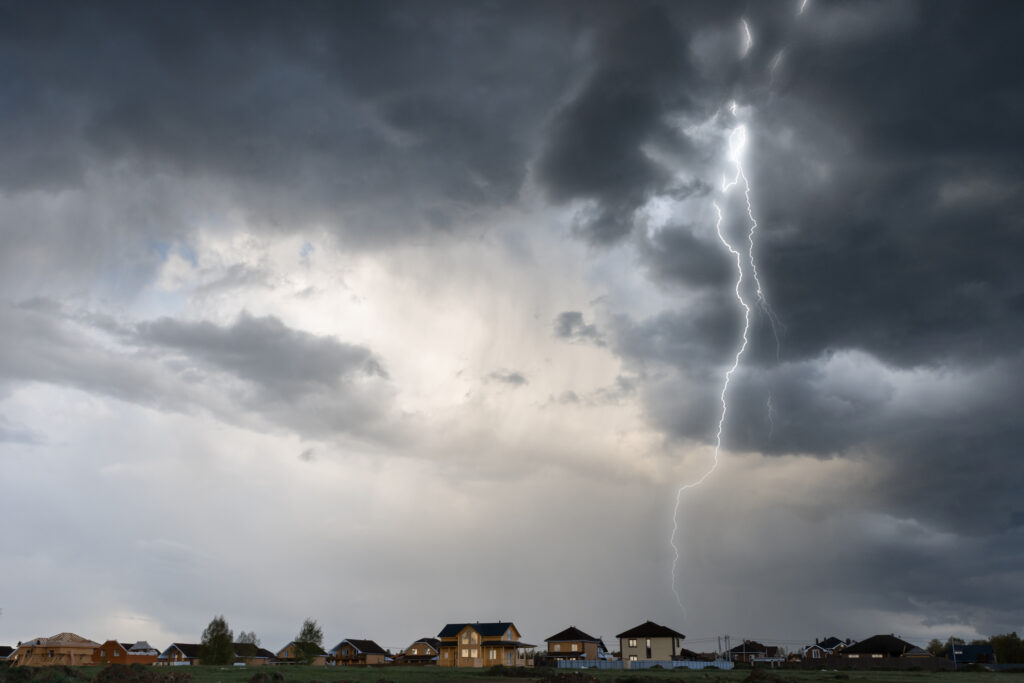
By Loretta Worters, Vice President, Media Relations, Triple-I
Lightning-related homeowners’ insurance claims totaled $1.04 billion in 2024, a 16.5 percent decrease from 2023, according to new data from the Insurance Information Institute and State Farm, the largest writer of homeowners’ insurance in the United States. The number of lightning-caused claims also fell significantly, dropping 21.5 percent, to 55,537, the lowest level recorded since before 2017.
More than half of all claims came from the top 10 states, with Florida, Texas, and California leading the country in lightning-related property losses.
“Fewer claims and a decline in severity indicate increased awareness and improved mitigation,” said Sean Kevelighan, CEO, Triple-I. “Nonetheless, lightning remains a significant threat to property and safety, particularly during storm season.”
Key lightning claim stats for 2024
- Total number of claims: 55,537 (down from 70,787 in 2023)
- Total claims value: $1.04 billion (down from $1.24 billion)
- National average cost per claim: $18,641
- Highest state average: $38,558 in Texas
Top three states by lightning losses
- Florida – 4,780 claims, $113M in damages
- Texas – 4,369 claims, $168M in damages
- California – 4,005 claims, $75M in damages
“Lightning remains a costly and unpredictable threat, with ground surges causing nearly half of all claims,” said Michal Brower of State Farm. “These events can cause extensive damage to electrical systems, appliances, and even structural issues. The damage underscores the critical need for homeowners to be aware of the risks, invest in protective measures, and stay prepared, especially in high-risk regions where lightning strikes are most frequent and damaging.”
Lightning strikes can cause more than just a power outage. Common impacts include:
- Fires in attics, roofs, or walls
- Power surges that destroy electronics and appliances
- Structural damage
- Injury or even death
How to Stay Protected
Homeowners can protect their families and property by following a few guidelines:
- Install whole-home surge protection and unplug devices during storms;
- Consider a certified lightning protection system;
- Check your homeowners’ insurance policy for lightning and surge-related coverage; and
- Stay indoors and avoid wired devices during thunderstorms.
Damage caused by lightning, such as fire, is covered by standard homeowners’ insurance policies. Some policies provide coverage for power surges that are the direct result of a lightning strike.
The Lightning Protection Institute (LPI) notes that lightning strikes can occur at an astonishing rate of 100 times per second.
“Whether it’s a family home or a mission-critical facility, no property is immune to lightning,” said Tim Harger, Executive Director at LPI, whose organization provides resources for the design, installation, and inspection of lightning protection systems. “The most effective time to prevent lightning damage is before a storm. A lightning risk assessment paired with a professionally installed protection system can make all the difference in keeping people safe and operations uninterrupted.”
While lightning-related claims may be down, the risk is still very real, especially in high-strike areas like Florida, Texas, and California. Taking preventive steps now can reduce exposure to costly damage later.
Learn More:
Lightning Protection Institute
The Importance of Protecting Critical Facilities From Lightning Strikes
Lightning: Quantifying a Complex, Costly Peril to Support Resilience
Beyond Fire: Triple-I Interview Unravels Lightning-Risk Complexity

